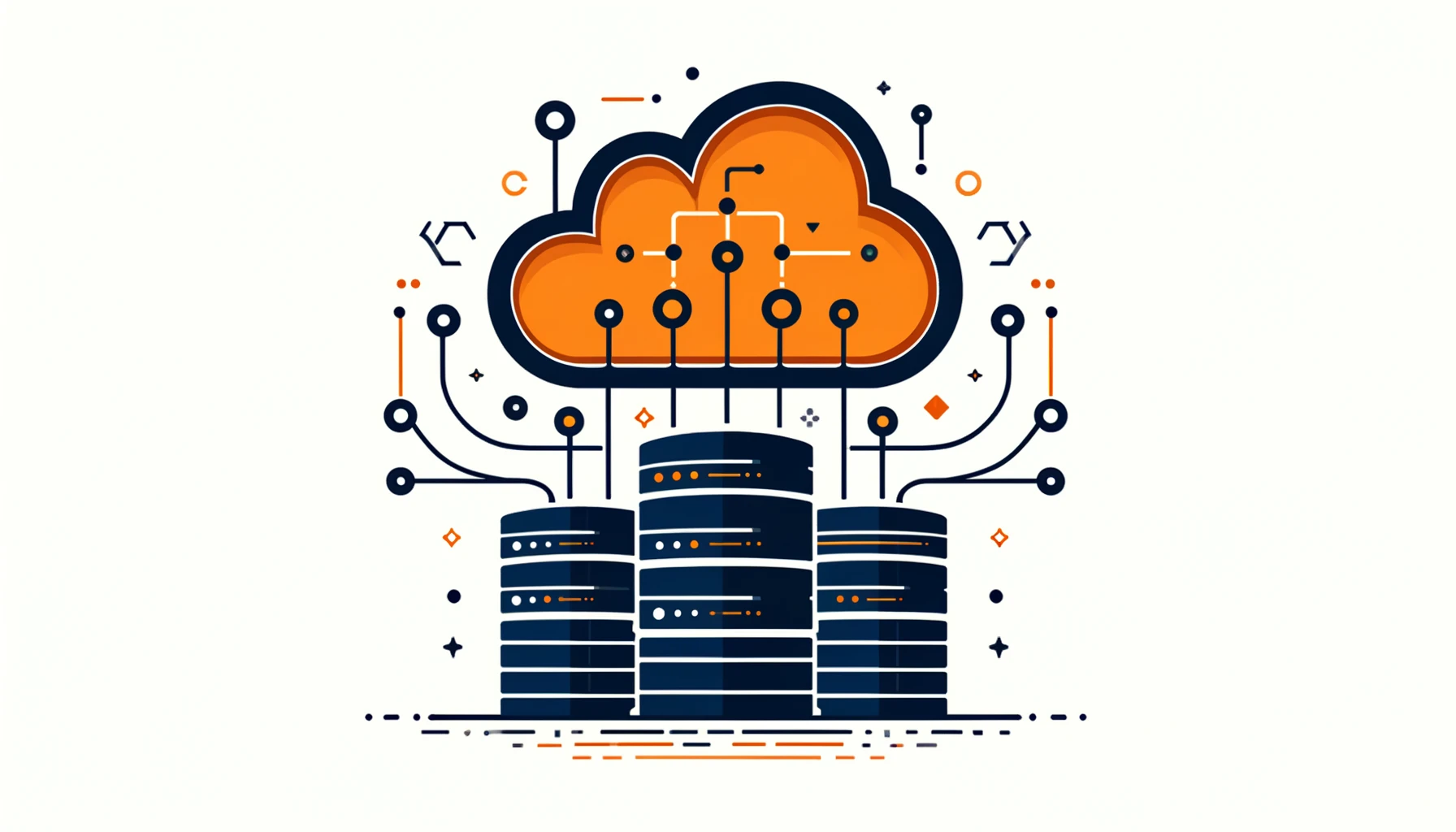
Cloud Database

In the ever-evolving landscape of technology, businesses are constantly seeking innovative ways to manage their data effectively and securely. Cloud databases have emerged as a pivotal solution in this quest, offering flexibility, scalability, and robust performance. This article dives into the basics of cloud databases, explores how they are implemented across popular databases and dedicated software, and provides practical examples to help you get started.
What is a Cloud Database?
A cloud database is a database service built and accessed through a cloud platform. It allows users to store and manage data without the physical limitations of traditional database management systems. Cloud databases support various data models, including structured, semi-structured, and unstructured data, making them versatile for different business needs.
Why Cloud Databases?
The shift to cloud databases is driven by their ability to provide dynamic scalability and high availability without the overhead of local hardware management. Companies can significantly reduce costs, enhance performance, and improve data accessibility through cloud solutions.
Cloud Database Implementation
Popular Cloud Database Services
Several leading tech giants offer cloud database services with unique features tailored to different business requirements. Here are a few examples:
- Amazon Web Services (AWS) RDS: Amazon RDS makes it easy to set up, operate, and scale a relational database in the cloud. It provides cost-efficient and resizable capacity while managing time-consuming database administration tasks.
- Google Cloud SQL: A fully-managed database service that makes it easy to set up, maintain, manage, and administer your relational databases on Google Cloud Platform.
- Microsoft Azure SQL Database: A general-purpose relational database service that supports structures such as relational data, JSON, spatial, and XML.
Configuration Examples
To help you get started with cloud databases, here are configuration examples for not only Amazon RDS but also Google Cloud SQL and Microsoft Azure SQL Database. Each platform offers unique tools and interfaces for setting up and managing databases.
Amazon RDS Example
Here’s a recap of the Amazon RDS setup example:
# Set up a new Amazon RDS DB instance aws rds create-db-instance \ --db-instance-identifier ExampleDB \ --db-instance-class db.m4.large \ --engine mysql \ --master-username admin \ --master-user-password securepassword \ --allocated-storage 20
This command initiates a new MySQL database instance with specified configurations.
Google Cloud SQL Example
Setting up a Google Cloud SQL instance involves a few more steps, primarily because of the different configurations and options provided by Google Cloud:
# Set up a new Google Cloud SQL instance gcloud sql instances create example-instance --tier=db-n1-standard-1 --region=us-central1 # Set the root password gcloud sql users set-password root --host=% --instance=example-instance --password=securepassword
This set of commands creates a new SQL instance named example-instance and sets a password for the root user. Google Cloud SQL supports MySQL, PostgreSQL, and SQL Server, allowing for flexible database solutions.
Microsoft Azure SQL Database Example
For Microsoft Azure SQL Database, the process is streamlined through the Azure CLI or PowerShell. Here is a basic example using Azure CLI:
# Log in to Azure az login # Create a SQL Database in Azure az sql db create --resource-group myResourceGroup --server myServer --name mySampleDatabase --service-objective S0
This command sets up a new SQL database named mySampleDatabase in an existing server myServer within a specified resource group. The –service-objective parameter can be adjusted based on the performance tier needed.
Querying a Cloud Database
Once you have set up your cloud database instances, querying them is the next essential step to managing and utilizing your data. Here are examples of how you can perform queries on Amazon RDS, Google Cloud SQL, and Microsoft Azure SQL Database. Each platform may require specific tools or methods to access the database.
Querying Amazon RDS
For Amazon RDS, you typically connect using standard SQL client software that supports the specific database engine you’re using, such as MySQL, PostgreSQL, or SQL Server. Here’s an example using the MySQL client:
# Connect to an Amazon RDS instance running MySQL mysql -h myrdsinstance.abcdefg.us-west-2.rds.amazonaws.com -u admin -p
Once connected, you can run SQL queries directly:
SELECT * FROM your_table;
Querying Google Cloud SQL
To query a Google Cloud SQL instance, you can connect directly from any standard SQL client that supports MySQL or PostgreSQL, depending on which database you are using. For this example, let’s assume you are using MySQL:
# Connect to a Google Cloud SQL instance gcloud sql connect example-instance --user=root
This command will prompt you for the root password and then allow you to execute queries directly in the SQL interface:
SELECT * FROM your_table;
Querying Microsoft Azure SQL Database
Querying an Azure SQL Database can be done through various methods, but one of the most common is using the sqlcmd utility for SQL Server. First, ensure you have sqlcmd installed and then connect to your database:
# Connect to an Azure SQL Database
sqlcmd -S yourserver.database.windows.net -U yourusername -P yourpassword -d yourdatabasename
After logging in, you can perform SQL queries:
SELECT * FROM your_table;
Types of Cloud Databases
Relational vs. Non-Relational
Cloud databases can be broadly classified into relational and non-relational databases. Relational databases, like MySQL, PostgreSQL, and Oracle, use structured query language (SQL) for defining and manipulating data. Non-relational databases, also known as NoSQL databases, such as MongoDB, Cassandra, and CouchDB, are more flexible and are often used for large sets of distributed data.
Storage Solutions
The data in cloud databases can be stored in various formats, and the choice of storage significantly impacts the performance and scalability of the database system. Common storage solutions include:
- Block storage: Best for database storage that requires frequent read/write operations.
- File storage: Suitable for data that needs to be accessed as files and requires a file system.
- Object storage: Ideal for storing vast amounts of unstructured data.
Maintenance and Security
Maintaining a cloud database involves regular backups, performance tuning, and security measures to protect data. Security is paramount, as cloud databases often store sensitive information and need to comply with regulations.
DataSunrise: Advanced Database Security
When it comes to ensuring the security and integrity of your cloud databases, DataSunrise offers exceptional tools for database maintenance and security. Their solutions include advanced security features, audit rules, data masking, and compliance tools. For those interested in securing their cloud database environment effectively, visiting the DataSunrise team for an online demo is highly recommended.
Conclusion
Cloud databases represent a transformative technology that allows businesses to handle data efficiently and cost-effectively. Whether you are deploying a new database or migrating an existing one, understanding the basics, and implementing best practices in cloud database management will help you leverage the full potential of this technology.
As cloud databases continue to evolve, staying informed and utilizing advanced security solutions like those provided by DataSunrise will ensure your data remains safe and your operations smooth. Consider exploring these modern solutions to enhance your data management strategies further.
